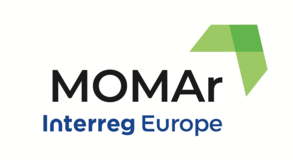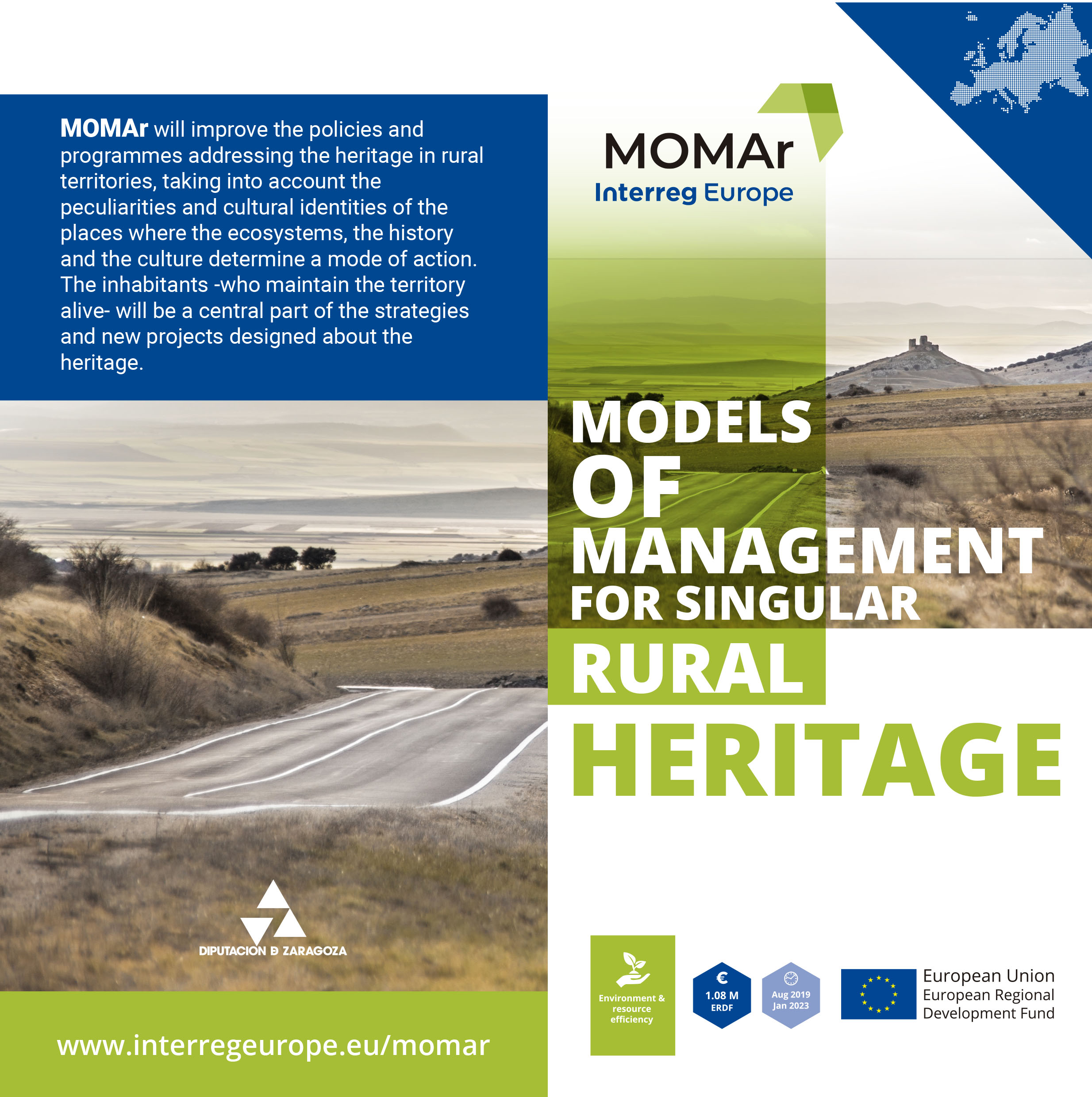The Zaragoza Provincial Council continues to work to advertise the project and establish lines of work with stakeholders from different regions, despite the particular health situation.
 On July 9, a MOMAr Tour was organized in the Cinco Villas region. The first stop was made in the town of Ejea de Los Caballeros where the DPZ team, formed by Isabel Soria and Irene Ruiz, visited the headquarters of the local development group Adefo Cinco Villas where they were received by their president, Juan Antonio Martínez, and by the manager, Maite González. During the meeting, the strategic lines of the MOMAr project were presented and the initiatives in the area of cultural and natural heritage that are being implemented in the region were discussed, both regarding the initiatives to open and visit monuments from the region itself, such as private initiatives with geocaching systems, proposals from local entrepreneurs, etc
On July 9, a MOMAr Tour was organized in the Cinco Villas region. The first stop was made in the town of Ejea de Los Caballeros where the DPZ team, formed by Isabel Soria and Irene Ruiz, visited the headquarters of the local development group Adefo Cinco Villas where they were received by their president, Juan Antonio Martínez, and by the manager, Maite González. During the meeting, the strategic lines of the MOMAr project were presented and the initiatives in the area of cultural and natural heritage that are being implemented in the region were discussed, both regarding the initiatives to open and visit monuments from the region itself, such as private initiatives with geocaching systems, proposals from local entrepreneurs, etc
Fieldwork in Zaragoza province
Later, the DPZ team was accompanied by Adefo to the archaeological excavation of Los Bañales, where they were received by its director, José Antonio Martínez, and by the mayor of the municipality of Layana, Jesús Gay. The director of the excavation, the archaeologist Javier Andreu Pintado explained the progress of the excavations, but especially the visit management system, both organized and individually, which are helped by a free download app. The initiative of the open doors serves to make known to the inhabitants of the nearby towns the progress of the excavations and the discoveries that year after year occur thanks to the activity of the students who carry out excavations during the summer period was analyzed.
Immediately afterward, the future visitor center that is being refurbished in the town of Layana was visited, reusing an old agricultural warehouse and which hopes to open its doors shortly. In the center, some of the pieces that have been found during the excavations are exposed. There have also been interesting explanatory panels for both the excavation and the attractions offered by nearby places to enhance tourism throughout the region.
Later, the Layana Keep was visited, a 13th-century building, heavily restored, which has become a museum of Roman agriculture and rural landscape. The museum works with a home automation system that allows the autonomous visit of travelers through automated access.
Finally, accompanied by the members of Adefo, the Interpretation Center of the Order of Saint John of Jerusalem was visited in Castiliscar, located in an old palace-house of the encomienda. The different spaces are dedicated to the interpretation of the territory, its Roman past, Christian antiquity, the Sancho Ramírez border, and the history of the order itself. The church of San Juan Bautista and the hermitage of Santo Cristo were also visited, and the future of its management was considered.
On July 16, the second part of the MOMAr Tour was held in the town of Alagón to visit the District headquarters, the president of ADRAE, Jose Miguel Achón, Association for the development of the Ribera Alta del Ebro and learn the work of the students of the School Workshop Ribera Alta del Ebro III, which aims to become the Regional Center of Digital Heritage and which aims at training in ICTs of unemployed young people between 16 and 25 years old and its innovative application and advanced digital technology to promote new avenues of economic development in the region through the preservation and dissemination of heritage, tourism, and culture.
During the visit, the project was explained to the director of the School, Julián Millán, and the professor of the delineation module Pablo Sebastián, who was enthusiastic about it and who will surely participate in future meetings presenting this initiative that the DPZ technicians value proposing as good practice. The students themselves made a presentation to the DPZ team about the work they have carried out, the methodology used, and the objectives set by the school, which represents an innovative commitment to the training of young people in heritage matters.













